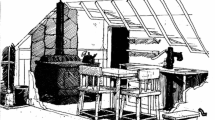Abstract
In most realtime applications such as 3D games, in order to reduce the complexity of the scene being rendered, objects are often made by simple and large primitives. Thus, the phenomenon of edge highlighting, which would require chamfering structures made by lots of small patches at the seaming, is absent and is often faked by “highlights” drawn on the texture. We proposed a realistic realtime rendering procedure for highlighting chamfering structures, or rounded edges, by considering specified edges as thin cylinders and obtained the intensity via integration. We derived a brief approximated formula generalized from Blinn’s shadow model, and used a precomputed integration table to accelerate the render speed and reduce resources needed. The algorithm is implemented with shader language, and can be considered as a post-process on original result. Evaluation shows that the effect on rendering speed is limited even for scenes with large scale of vertices.







Similar content being viewed by others
Notes
DropBox folder: https://db.tt/bOASPvpT.
References
Phong, B.T.: Illumination for computer generated pictures. Commun. ACM 18(6), 311–317 (1975). doi:10.1145/360825.360839
Blinn, J.F.: Models of light reflection for computer synthesized pictures. SIGGRAPH Comput. Graph. 11(2), 192–198 (1977). doi:10.1145/965141.563893
Cook, R.L., Torrance, K.E.: A reflectance model for computer graphics. ACM Trans. Graph. 1(1), 7–24 (1982). doi:10.1145/357290.357293
Saito, T., Shinya, M., Takahashi, T.: Highlighting rounded edges. In: Earnshaw, R., Wyvill, B. (eds.) New Advances in Computer Graphics, pp. 613–629. Springer, Japan (1989). doi:10.1007/978-4-431-68093-2_40
Tanaka, T., Takahashi, T.: Precise rendering method for edge highlighting. In: Patrikalakis, N. (ed.) Scientific Visualization of Physical Phenomena, pp. 283–298. Springer, Japan (1991). doi:10.1007/978-4-431-68159-5_16
Tanaka, T., Takahashi, T.: Precise rendering method for exact antialiasing and highlighting. Vis. Comp. 8(5–6), 315–326 (1992). doi:10.1007/BF01897118
3ds Max. AutoDesk. http://www.autodesk.com/products/autodesk-3ds-max/overview (2014)
EdgeShade. Cinema4D Plugin by Biomekk. http://www.biomekk.com/index.phppage=1&cat=107&itm=18 (1.03.001)
Sloan, P.P., Shirley, P.: Edge-aware shaders. In: GPU Technology Conference (2012)
Panda3D. Carnegie Mellon University. www.panda3d.org (1.8.1) (2013)
Microsoft Corporation. Tesellation Overview for DirectX11. http://msdn.microsoft.com/en-us/library/windows/desktop/ff476340 (2009)
Acknowledgments
Thanks for the first anonymous reviewer for this article who pointed out a mistake in the derivation of Eq. 3. And because of this I found out a deeper and more serious bug, making me overwrite almost the whole Sect. 3.1. The first author was supported by the National Basic Research Program of China Grant 2011CBA00300, 2011CBA00301, the NSFC (61033001, 61361136003). The second author was supported by the Chinese 973 Program (2010CB328001) and the NSFC (61035002, 61272235). The third author was supported by the NSFC (91315302, 61173077).
Author information
Authors and Affiliations
Corresponding author
Rights and permissions
About this article
Cite this article
Wei, LY., Shi, KL. & Yong, JH. Rendering chamfering structures of sharp edges. Vis Comput 31, 1511–1519 (2015). https://doi.org/10.1007/s00371-014-1030-6
Published:
Issue Date:
DOI: https://doi.org/10.1007/s00371-014-1030-6




